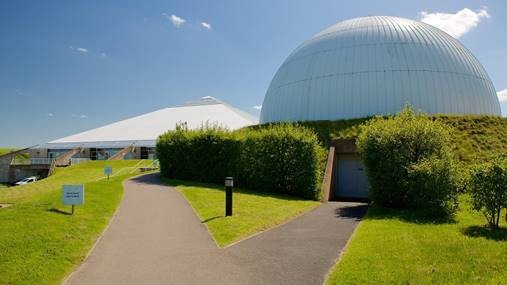
In the International Year of Sound, new acoustic solutions will make the Centre accessible for all
The small but beautiful city of Winchester was once the capital of England. Winchester Science Centre, a more modern addition to the city, is on a mission to make STEM (Science, Technology, Engineering and Mathematics) accessible to everyone. Over the past three years the team have created the UK’s most accessible planetarium, installed a vital Changing Places facility and created exciting opportunities to spark curiosity in STEM in the community. And now, a long-held desire to improve the noisy and sometimes overwhelming environment created by the unique pyramid-shaped building, has also been achieved. The Centre is breaking the ‘sound barrier to science’ by installing state-of-the-art acoustics.
The instantly recognisable pyramid and dome won awards for its innovative and striking design when it opened in 2002. Constructed from concrete, steel and glass it offers panoramic views of the South Downs National Park and a visible internal structure showcasing its engineering. However, the abundance of glass and other hard surfaces meant that the high reverberation time and ambient noise level created by visitors, the café and exhibits created constant noise, annoying for many visitors and overwhelming for those with sensory disabilities.
Working with Peter Rogers, Managing Director of Winchester-based acoustics consultancy, Sustainable Acoustics, the team were able to identify the venue’s ‘noise hot-spots’.
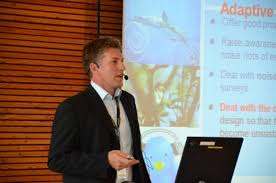
“Dealing with a pyramid of such great volume presents significant challenges when modelling and optimising suitable interventions. When the volume is acoustically excited by activity in the space the noise build-up is quite dramatic and presents an obstacle to the visitor’s experience. Our baseline measurements showed the reverberation time in the speech range was typically well over 2.5 seconds, with less than ideal speech intelligibility”
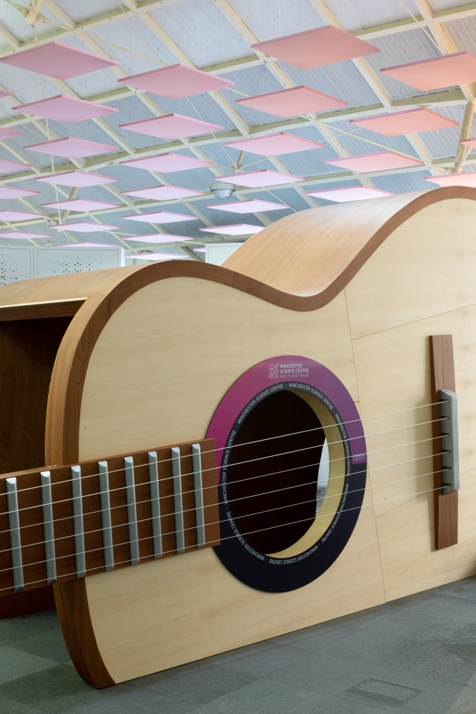
“Our role has been to curate an intervention that combined a significant change to finishes within the building, but also worked with the design of the exhibits themselves to provide diffusion and absorption in the space. The most significant intervention came with the creative involvement of Ecophon in the project, allowing the full range of their absorbers to be used to dramatic effect. Our modelling is aiming for a significant improvement in the speech region, in key areas to improve the visitor experience and inspire all. We are delighted to be a part of this transformative project, showing how acoustics is so critical to inspiring learning”
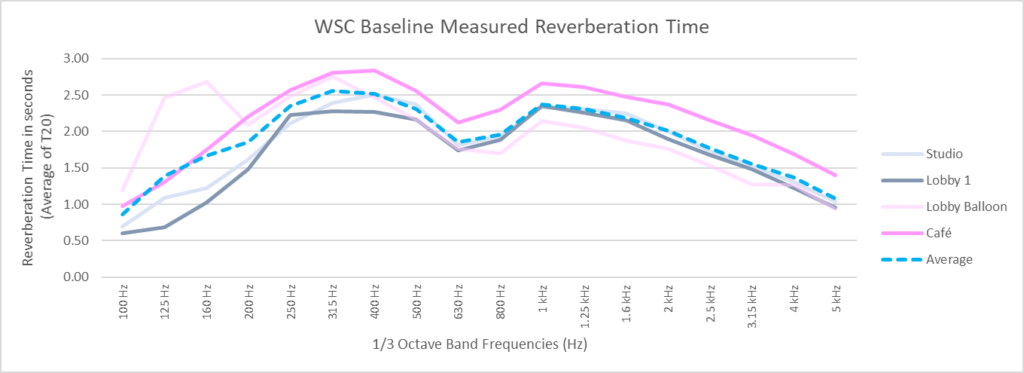
The pre-installation test results were taken as averages over 10 to 15 positions in each area, as a continuous source, to represent excitation, particularly in the speech range. Sustainable Acoustics predict a drop in the reverberation time of approximately one second Tmf in these key areas.
However, changing priorities and limited budgets meant that the project might never have got off the ground, reports the centre, if all the stakeholders had not remained committed to improving the wellbeing of visitors to the Centre and prioritised this project despite being in the midst of the Covid-19 crisis.
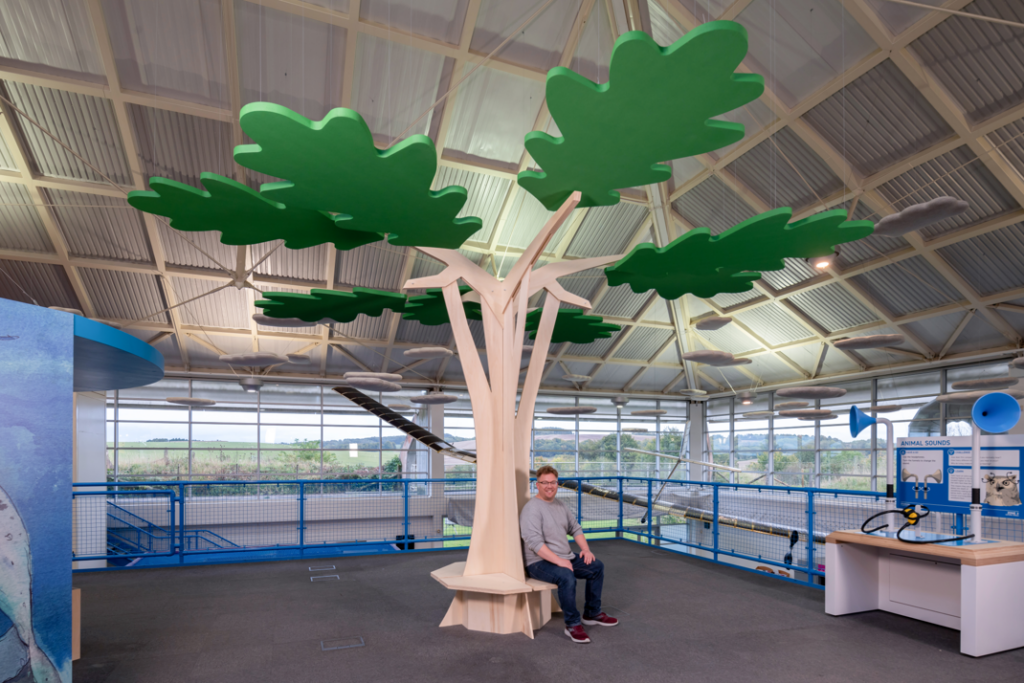
From a calming wave-like installation above the welcome area to fun pink patchwork squares over the café each set of acoustics will focus on solving sound problems, improving ambient noise and providing an aesthetically pleasing environment for visitors. We have long recognised the power of biophilic design. It is possible to have custom designed, acoustic green leaves which will form part of a cleverly designed oak tree to be installed soon. There will also be an opportunity for visitors to learn about how acoustic solutions have improved the Centre and how they can be used in homes, schools and workplaces to improve people’s focus and wellbeing.
Ben Ward, Chief Executive Officer of Winchester Science Centre, said:
“No two visitors are the same. Everyone has different needs when they visit us, from the exhibits they enjoy and the interaction they require to the information they receive and the facilities they use. The new acoustics are the next exciting stage in this project and we can’t wait to see what our visitors think.”
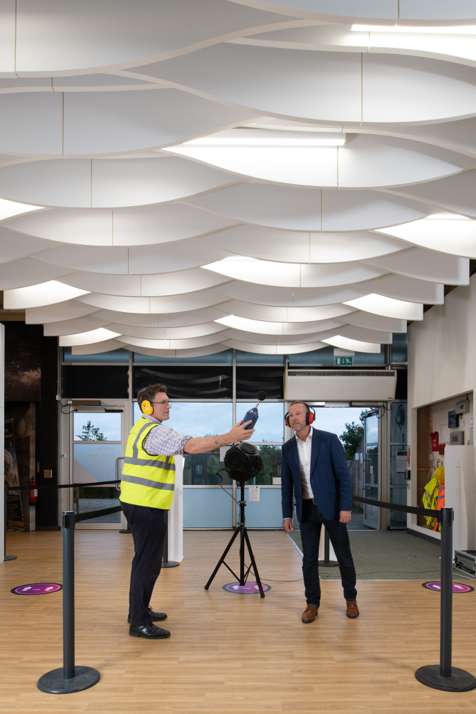
“We are so grateful to our suppliers who have also provided additional materials to use within the exhibition so that we can create a Recombobulation Room – a quiet space for visitors who need time away from the hustle and bustle of the Centre.”
For anymore information about this ongoing project please contact me Shane Cryer Concept Developer Education UK & Ireland.
For Sustainable Acoustics project updates and post completion results follow Peter Rogers here.
For Science@Home activities or more information about Winchester Science Centre and its reopening plans,visit their website here.


